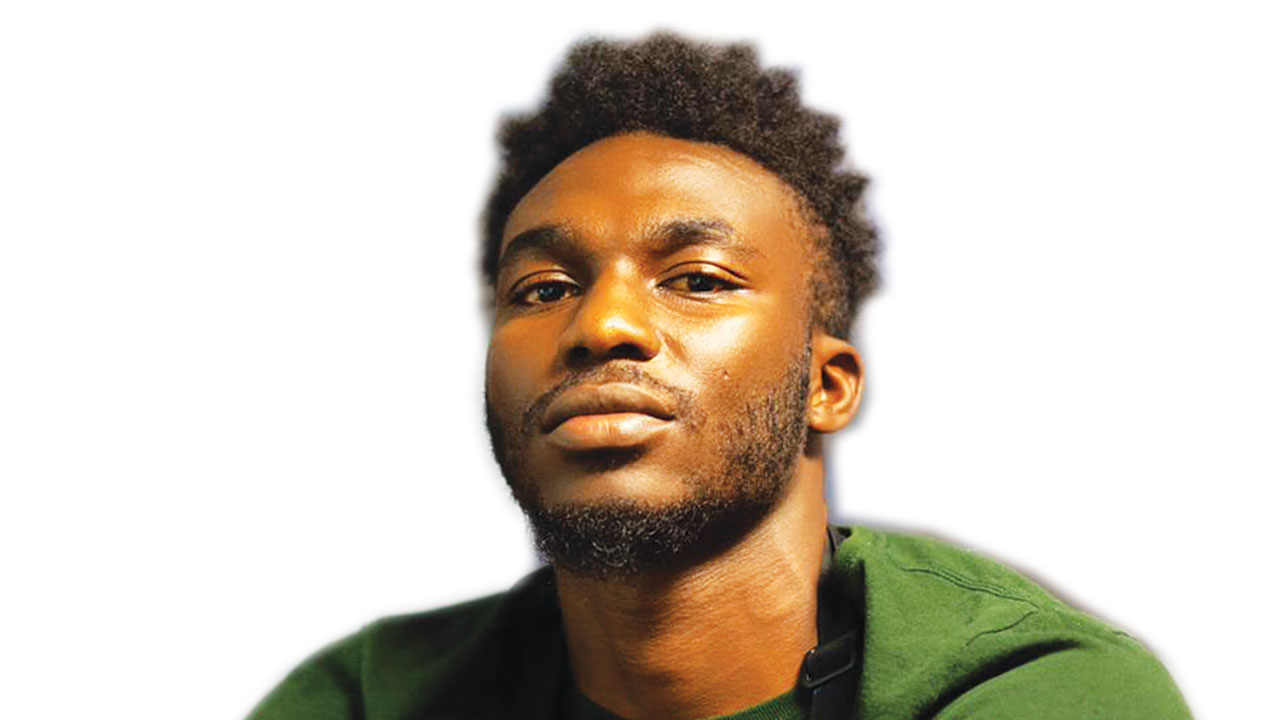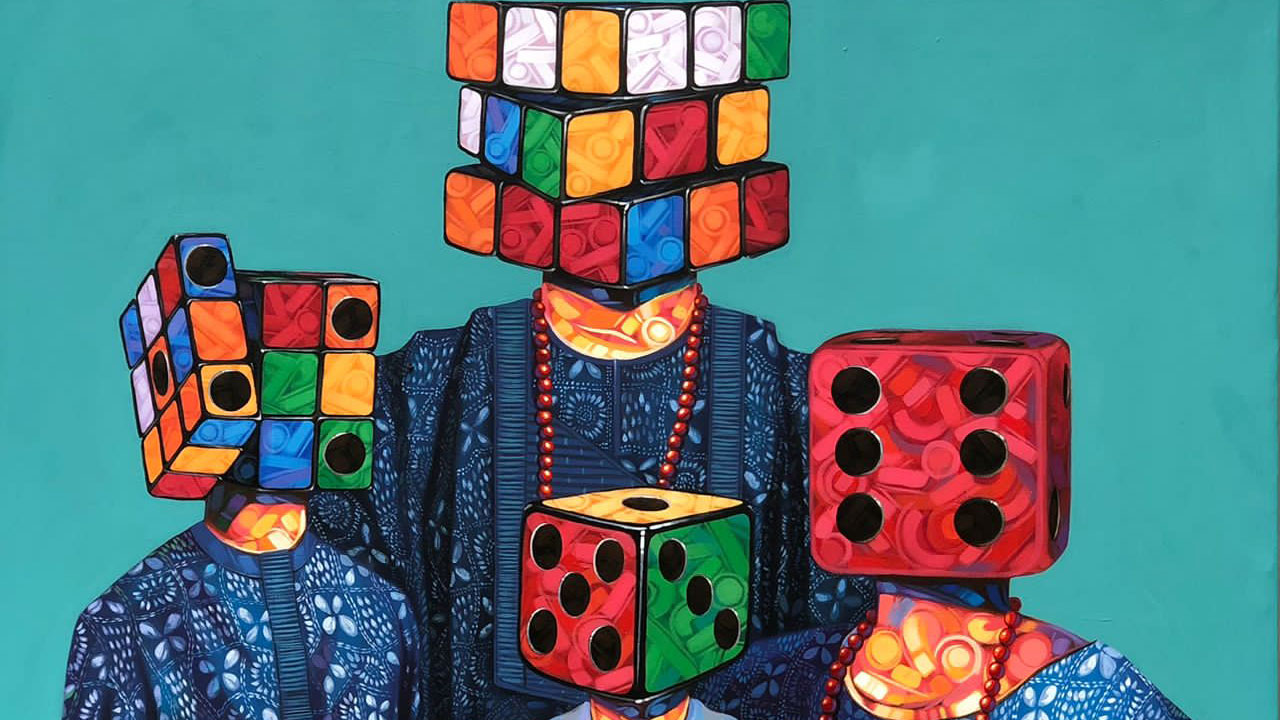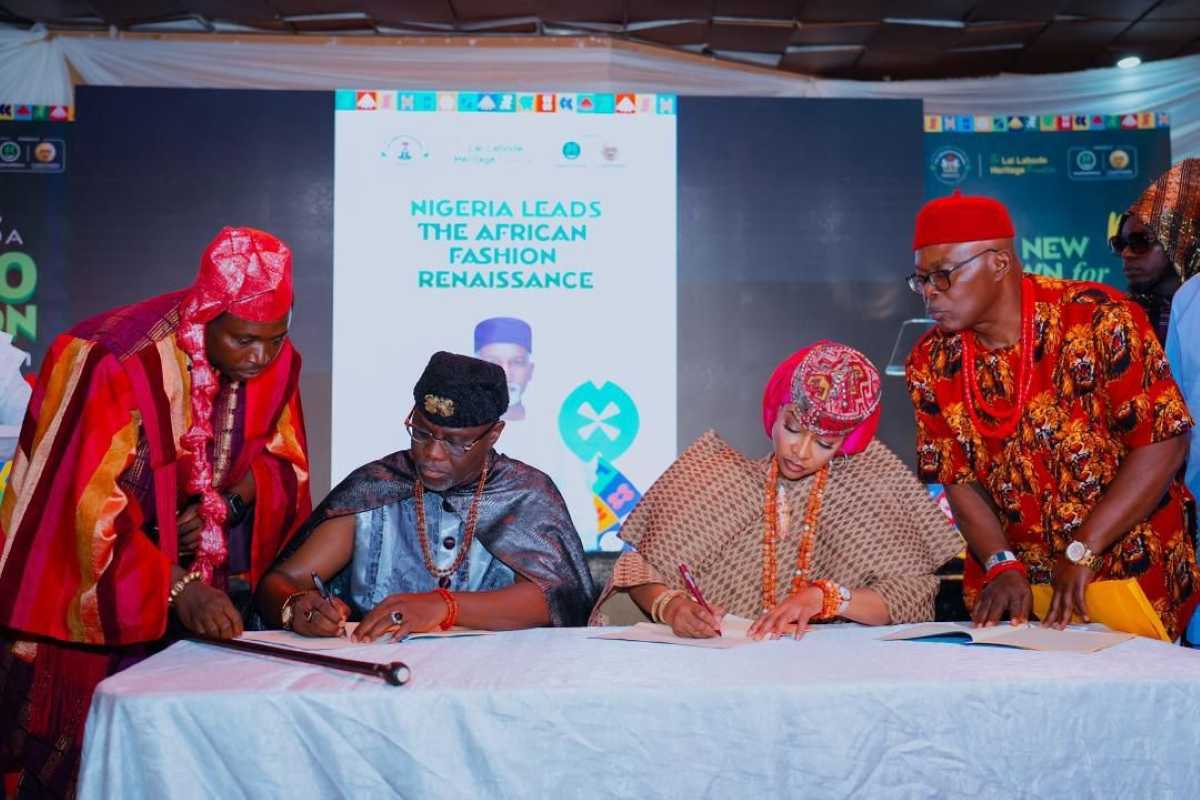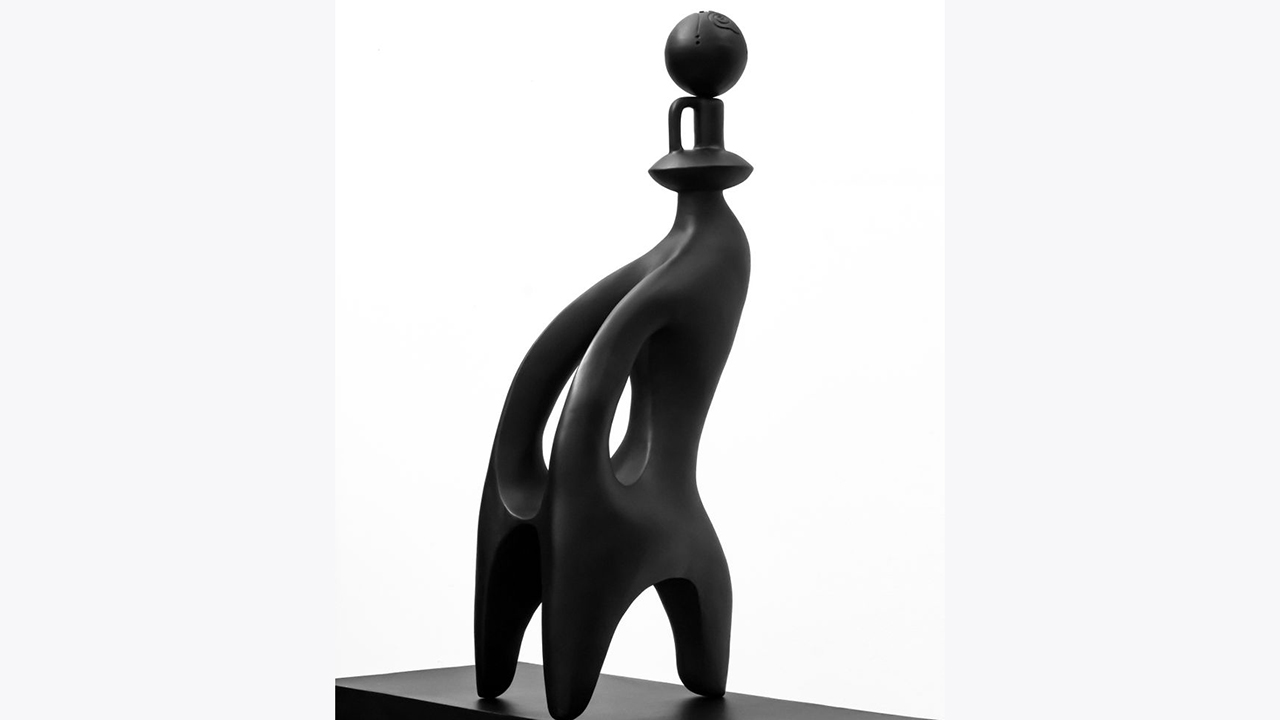
A solo show that reveals an end to the way America-based Nigerian painter Akintayo Akintobi approaches his art in the past is billed to hold at South River Art Studio, 1300 Fleetwood Dr SE, Atlanta GA; United States of America. (USA).
The historic event runs from October 6 to November 3, 2023.
The show, entitled, ‘The End of The Beginning’, is a watershed moment to the artist, who graduated with a degree in Fine Arts from the Obafemi Awolowo University, Ile-Ife, Osun State of Nigeria. It is significant and a turning point in the artist’s career of over a decade of practice in the visual art space.
The artist, who is currently pursuing a Master of Fine Arts degree in Studio Art at East Tennessee State University, USA, disclosed that he has been painting since he was seven years old, and about a decade ago, he went professional in painting.
Taking us into his journey of exploring African art, Akintobi said: “I explore African art using symbols, patterns, and fabrics particularly to Africans in my works through an abstract and surrealistic lens. I combine these with lines, shapes and figures to tell stories or teach life lessons from an African perspective.”
On the historical relevance of the theme to African-American and the Nigerian people in particular, Akintobi noted: “The End of the Beginning” focuses primarily on human existence, adding: “It features an assortment of paintings about the birth and death of people, the commencement and termination of things, friendships, relationships, jobs, and everything we experience in life.

“It equally talks about man’s ability to design his life and determine the beginnings and ends of his experiences.
African-Americans and Nigerians are a people with a long history of hardships and survivals. For them, anything that has a beginning has an end. They rode with this mantra against slave trade, and they won. Now, as racism, abuse, and discrimination are on the rise, these works are a reminder to all black people that they can win again. All they need do is determine to end it.”
He also spoke on philosophical themes that drive his art. “Many philosophical themes drive my works but the ones that often spur me into creative pursuits are themes on family, identity, love, and perception. I love how families, friends, and communities intercept in people’s lives and it inspires me greatly. I love that you can describe a person as someone’s child, friend, partner, or a native of a place. It’s beautiful when you have relational strings attached to you, and it is painful when you have none; I paint for both circumstances.”
The artist said he is worried about how people think.
According to him, “it is this curiosity that birthed his constant distortion of game pieces in some of his works. “
He added: “It perfectly captures my awe, curiosity, and tireless research into the human mind.”
The show, which is bringing the artist to a point of transition, thus, marking the end of one phase and the start of another is created in five series. They are portrait, family, friendship, human-animal, and abstract series.
For him: “These series talk about the beginning of our lives as humans, the support we get from family, the love of friends, the loyalty of pets, and the end of our lives. And they were inspired by my observation of human life and relationships. I think it’s beautiful how humans relate with one another, animals, and the environment.”
What are some of the exhibition you have participated in, either as group, joint and solo?
“I have participated in some exhibition in the United States of America and Nigeria. I was part of Con-figuration, at William King Museum, Abingdon VA USA, and Holla If You See Me, at The Kansas African American Museum, Kansas city Mo USA in 2023. In 2022 I had The Black Gaze, at Tipton Gallery, Johnson City, TN. USA, and Striped Down at Vestige Concept gallery, Pittsburg, PA USA, and 60 years of artists’ days, at Oduduwa Hall basement, Obafemi Awolowo University Ile-Ife, Osun, Nigeria in 2021.”
He revealed that all the art pieces on parade on this exhibition promote African culture especially the Yoruba culture. “As is my habit in most of my works, I input patterns of the Adire Eleko fabric (a fabric associated with the Yoruba people of Abeokuta, Ogun State). I also added some motif from the Ife people’s Onaism’.
“Most of them have weighty cultural meaning and added sentimental value to the paintings. By their mere presence connotative positioning, I hope people can see beauty of Yoruba and Africans at large.”
Highlighting the decade journey as a visual artist and how it goes on to influence on his art, Akintobi shared two of such influences. “The first highlight for me is my improved understanding of art. I have come to know art as something beyond hobby, a job or a mere combination of colors. I now know art as an outlet of deep expression, as a book of history, and as a place for mystery and secrets.
“The second one is that the concept, meaning, and appeal of my works resonate with people from various part of the world. I’ m glad I can use art as a universal language. These, and the entirety of my career as a visual artist have made me a deeper thinker. I no longer look at the things as they ordinarily appear. I now question positioning, usage, meaning, and the existence or non-existence of things. Art, mine and others, have changed me beautifully.”
At the end of this exhibition which will unveil 14 colourful artworks borne out of deep thinking, Akintobi hopes that they achieve the same effect in everyone who attends the exhibition. “I also hope that these works with their Nigerian motif and symbols reveal the beauty of Nigeria to the world. The narrative about Nigeria is unpleasant and bothersome, and I hope to change it one painting at a time,” he enthused, even as he added. “This belief stems from the fact that after studying these works during my preparations, I thought more consciously and deeply about it.”
On the curator, he said: “The exhibition is curated by South River Art Studios. It is an art gallery and studio in Atlanta. I met the studio/gallery management while working on a floor mural with an artist friend. They saw my work, loved it, and offered me the opportunity of an exhibition.
“The works that particularly pulled them into my craft are those with game pieces; they expressed their admiration for my use of game pieces to express human situations and emotions. Now, we are here.”
Asked for the new materials on board the exhibition’s works he stated that. “Before now, I used acrylic for most of my works. Now, I introduced satin paint to the materials used for creating these works. I used it alone or combined it with acrylic paint for some works. I also added locally woven mats to my materials. To perfectly execute one of my visions, I used local mat for an abstract painting.”





